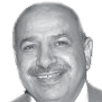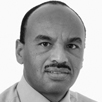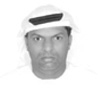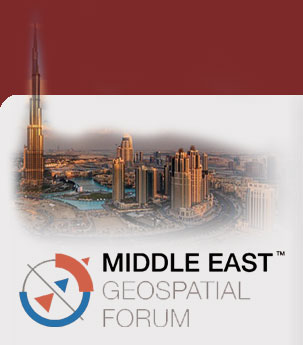Chris Gibson
Vice President
Trimble Inc
USA
 BIO
BIOMr. Christopher W. Gibson is Vice President - Trimble's Survey, Geospatial, Geographic Information System (GIS), Infrastructure, Rail, Land Administration and Environmental Solutions businesses of Trimble Navigation Limited. Mr. Gibson joined Trimble in 1998 as European finance and operations director. In 2009, he was appointed to serve as vice president responsible for Trimble’s Survey Division, and in December 2010, those responsibilities were expanded to include oversight of geographic regions and divisions, including Building Construction, Construction Tools, and the Hilti joint venture. From 2008 to 2009, Mr. Gibson served as the general manager for the Survey Division, and from 2005 to 2008, he was general manager for the Global Services Division. Mr. Gibson received a BA in Business Studies in 1985 from Thames Polytechnic, now the University of Greenwich, and was admitted as a Fellow to the Chartered Institute of Management Accountants in 1994.
ABSTRACT
An insight into the evolving dimensions of geospatial technologies
The rate of development and change in geospatial technologies from both a data collection and a data usage perspective continues to progress at a rapid pace. The benefits to the both geospatial professionals and the end users of the information are significant. Chris Gibson will present an overview of how the overall geospatial technologies are evolving and will provide examples of the incremental value these capabilities are providing to both the geospatial professionals and the industry end users.
|
 Dr. Oualid Ali Dr. Oualid Ali
Head of MIS Department
University of Sharjah
UAE
Kuwait
BIO
Oualid (Walid) Ben Ali, PhD obtained a bachelors degree in Management Information Systems (MIS), in 1998, from the "Institut Superieur de Gestion", in Tunis, Tunisia. In 1999, he moved to Canada, Laval University, Quebec, to carry on further studies and obtained a Masters degree in Computer Science in 2001, and PhD in Computer Science in 2006. In 2006, he moved to work at the University of York (UK) for two years as senior research assistant. In 2008, he moved to Sharjah University (UAE) to work in the MIS Department in the College of Business Administration. In 2010, he became the Head of the MIS Department. Dr. Ben Ali is a research leader in the field of Geographic Information Systems (GIS) and Location Intelligence (LI); he has founded the GIS Center of the University of Sharjah (http://www.walidali.net/giscenter/index.html). He is an active researcher and has published several papers in renowned journals. He has participated in many international and national conferences. He has participated in numerous projects and has done several consultancies around the world. For more information about Dr. Oualid, please visit his website (www.walidali.net).
ABSTRACT
The era of Big Spatial Data: Challenges and solution
Today, spatial information technologies or geospatial technologies play increasingly important roles in several fields. Advances in remote sensors, photogrammetric instrument, laser scanner, and radar have created huge collections of spatial data, capturing spatial information of value. Following the development of these spatial data acquisition technology, more and more spatial data have been collected during the last few years. Moreover, the feature of this spatial data is different: it data has complex structure, the amount is enormous, and it needs high computing capabilities.
Due to this, we face unprecedented challenges in the field of big spatial data in terms of storage, management and analysis. In this presentation, we will present these challenges and the solutions proposed to face them. Therefore, we will talk about cloud computing to store this big data and about spatial analytics for big data to analyze it and make sense of it. |
 Jill Urban-Karr Jill Urban-Karr
Executive Director, Consulting Svcs/landfolio Solutions
Land Administration Solutions Group
Trimble Navigation Ltd.
USA
BIO
Jill Urban-Karr, Executive Director ? Consulting Services/landfolio® Solutions. Ms. Urban-Karr began her career in the development and implementation of GIS and geospatial solutions in the public sector. She is a senior manager with over 17-years of experience in land registration, cadastre and real estate market modernization in both the public and private business sectors. She has proven ability in strategic planning, budget management, process analysis, needs assessment, solution design and proposal development for numerous international projects. Ms. Urban-Karr has pursued and implemented multi-participant e-Government and land tenure/land administration projects for both the public and private sector throughout the world, including: Costa Rica, Romania, Egypt, Madagascar, Benin, Burkina Faso, Bulgaria, Croatia, Jordan, United Arab Emirates, Belize, Bermuda, Saudi Arabia, Sri Lanka and many others. She is currently the Chairman of the Texas A&M University?s Department of Geosciences Advisory Board, and a member of the San Antonio College GIS Curriculum Advisory Board.
ABSTRACT
The Role of Geospatial Technologies in Storm Water Run-off Planning and Management for Urban Areas
Urban planning has always taken in to consideration environmental factors (slope, soils, weather, existing infrastructure, etc.) in the design of development plans and strategies. By integrating geospatial technologies into their planning and design efforts, planners are able to anticipate the impact that new or updated plans will have on the target areas. This presentation will focus on the utilization of multi-spectral imagery in association with GIS technologies for the impact monitoring of new development in urban areas, specifically related to the change in impervious surface areas (urban run-off) which can potentially impact water systems, treatment systems and environmentally sensitive areas.
|
 Eng. Khalid A. Hameed Al Hammadi Eng. Khalid A. Hameed Al Hammadi
Act. Director of GIS
Central Informatics Organisation (CIO)
Kingdom of Bahrain
BIO
Eng. Khalid A. Hameed Al Hammadi - Act. Director of GIS Directorate of the Central Informatics Organisation (CIO), Kingdom of Bahrain, received an MBA from University of Glamorgan (Wales) in 2004, and a BSc in Land Surveying and Mapping Sciences from University of East London (UK) in 1986. He holds several prestigious official mandates, and is credited with overall effective management and implementation of GIS related activities of the GIS Directorate. Under the able guidance of Eng. Al Hammadi, the GIS Directorate (CIO) has successfully developed and deployed several GeoInt GIS applications for ministries in Bahrain, that have proven as assets in the functioning of the Ministries. Eng. Al Hammadi has an active participation towards fulfilling the Bahraini Governments 2030 vision, of Geospatial fortification of the nation and to his credit are several literary notes on spatial data and its utility for the Kingdom that has won international acclaim. The Geospatial vision of Eng. Al Hammadi for the ministries and the nation is reflected in his technically sound enterprise ventures of Geospatial information at the levels of Government, Public Sectors and General Citizens.
ABSTRACT
Bahrain Geospatial Enterprise Portal: Towards Wider User Community
Geospatial industry is growing like never before. Today, geospatial information, technologies, services (GITS) and spatial data infrastructure (SDI) play critical roles in allowing geo-enabling governments, local communities, non-government organizations, the commercial sector, the academic community and common people to make progress in addressing many of the world's most pressing problems. The key objective here is to create a community of practice locally that will address the key elements necessary for effective and reliable information sharing and coordination. Kingdom of Bahrain has made great strides in the field of Geographic Information System (GIS) with the support of the leadership for the Geographic Information sector which is represented in many ways, mainly the formation of the ‘National GIS Steering Committee (NGISSC)’ in 24th January 2004 with a decision of His Royal Highness the Prime Minister, Prince Khalifa bin Salman Al Khalifa which had a deep impact in supporting the work of the ministries and authorities of the Kingdom and service delivery. The NGISSC developed a strategic plan for Geographic Information Systems, which we have implemented its provisions. The Kingdom of Bahrain takes pride in being one of the countries that have managed to establish a unified national-level Geographic Information database to support the needs of public, private, education sectors and the citizens and residents in realizing better means for sharing geographic data and technologies for meeting real countrywide needs. This presentation aims to introduce and discuss six challenges and issues relating to the implementation of Bahrain Spatial Data Infrastructure (BSDI) at enterprise level which will be able to meet the economic vision 2030 of the nation.
|
 Mark Reichardt Mark Reichardt
President & Chief Executive Officer
OGC
USA
BIO
Mark Reichardt is President and Chief Executive Officer of the Open Geospatial Consortium, Inc. (OGC). Mr. Reichardt has overall responsibility for Consortium operations, overseeing the development and promotion of OpenGIS® standards and working to ensure that OGC programs foster member success. He works with other standards development organizations and professional associations to establish alliance agreements to assure that OGC standards and other standards work together fluidly. Such coordination is critical, for example, to support standards that enable the full integration of geospatial information with real time sensor data and Building Information Models (BIM) used in architecture, engineering, construction and full life cycle management of buildings and other physical infrastructure. Mr. Reichardt joined the Consortium in November 2000 as Director of Marketing and Public Sector Programs; became the President of OGC and a member of the Board of Directors in September, 2004; and was appointed President and CEO in January 2008.Before joining the OGC, Mr. Reichardt was involved in technology modernization and production programs for the US Government. In the mid 1990's, he was a member of a DoD Geospatial Information Integrated Product Team (GIIPT) formed to help transition the DoD mapping mission to a more flexible and responsive geo-information based paradigm. Under Mr. Reichardt's leadership, the GIIPT Production Team validated the ability of commercial off the shelf hardware and software to meet many of the DoD functional requirements for geospatial production operations. In 1998 Mr. Reichardt accepted an assignment with Vice President Gore's National Partnership for Reinventing Government to manage a program to illustrate how the use of geospatial information and technologies could improve local to federal government coordination. In early 1999, Mr. Reichardt was selected to establish and lead an international Spatial Data Infrastructure (SDI) program for the US Federal Geographic Data Committee. In this position, Mr. Reichardt helped to establish globally compatible national and regional SDI practices in Africa, South America, Europe, and the Caribbean. He was instrumental in establishing several nation-to-nation collaborative SDI agreements. Mr. Reichardt serves on the Board of Directors of the Global Spatial Data Infrastructure Association and on the BuildingSmart Alliance Board of Direction.
|
 Eng. Nader Abdel-Halim Eng. Nader Abdel-Halim
GIS Consultant
eMISK
Kuwait
BIO
Eng. Nader Abdel-Halim is acting as a GIS consultant for the Environment Public Authority of Kuwait. He contributed extensively in the establishment of the Environmental Monitoring Information System of Kuwait (eMISK) with focus on Geo-database design and software development.
ABSTRACT
Environmental Monitoring Information System of Kuwait (eMISK)
Kuwait's Environment Public Authority (KEPA), provides leadership in the nation's environmental science, research, education and assessment efforts. It works closely with other federal agencies and local government organizations to develop and enforce regulations under existing environmental laws. KEPA is responsible for setting national standards for a variety of environmental programs, and enforcing compliance. The Authority also works with industries and all levels of government bodies in pollution prevention and energy conservation efforts. To evaluate and highlight the values of environment and put authoritative environmental knowledge at the center of decision-making, using Geographic Information Systems (GIS) and other relevant technologies such as remote sensing, GPS and web-GIS based services. KEPA established ‘Environmental Inspection, Monitoring and Emergencies Division (EIMED)’, with the state-of-art hardware and software, based on the latest technology and highly secured networking infrastructure. EIMED developed an enterprise-wide GIS based information system called the “Environmental Monitoring Information System of Kuwait (eMISK)” to enhance KEPA capabilities in the monitoring, communication, awareness generation and dissemination of environmental knowledge related to environmentally sensitive issues and activities in Kuwait.
|
 Barbara Ryan Barbara Ryan
Director
Geo Secretariat
Switzerland
BIO
Barbara J. Ryan is Secretariat Director of the intergovernmental Group on Earth Observations (GEO) located in Geneva, Switzerland. In this capacity, she leads the Secretariat in coordinating the activities of nearly 90 Member States and 67 Participating Organizations who are striving to integrate Earth observations so that informed decisions can be made across nine Societal Benefit Areas including agriculture, biodiversity, climate, ecosystems, energy, disasters, health, water and weather. Before assuming this position in July 2012, she was the Director of the World Meteorological Organization (WMO) Space Programme. She had responsibility for the space-based component of the WMO Global Observing System (GOS), coordinated space-based assets to meet the needs of WMO Members in the topical areas of weather, water, climate and related natural disasters, and also served as the technical focal point for WMO’s activities with GEO. Before joining WMO in October 2008, she was the Associate Director for Geography at the U.S. Geological Survey (USGS) in Reston, Virginia where she had responsibility for the Landsat, remote sensing, geography and civilian mapping programs of the agency. It was under her leadership that implementation of the Landsat data policy was reformed to release all data over the internet at no additional cost to the user -- an action that has resulted in the release of more than 12 million Landsat scenes to date. As the 2007 Chair of the international Committee on Earth Observation Satellites (CEOS) she led the space agency response to the Global Climate Observing System (GCOS) satellite requirements for sustained measurement of the GCOS Essential Climate Variables (ECVs). She holds a Bachelor´s degree in Geology from the State University of New York at Cortland, a Master´s degree in Geography from the University of Denver, and a Master´s degree in Civil Engineering from Stanford University.
ABSTRACTThe Global Earth Observation System of Systems (GEOSS), built by the Group on Earth Observations
(GEO), is a policy framework, as well as an emerging infrastructure that allows decision makers to respond more effectively to the many environmental challenges facing society today. Built upon broad, open data-sharing principles, information from an expanding array of observation
systems is being made available to users around the world. The 90 Members (countries and the European Commission) and the 77 Participating Organizations have recognized that the sheer complexity of the Earth’s system cannot be captured by any single observation system. Since its inception in 2005, GEO has had four primary objectives – improve and coordinate observation systems;
advance broad, open data policies and practices; foster increased use of Earth observation (EO) data and information; and build capacity. Participants have contributed data, research and other related Earth observation activities in nine Societal Benefit Areas (SBAs), including agriculture, biodiversity, climate, disasters, ecosystems, energy, health, water and weather. None of these SBAs exist in isolation and activities which cut across them are, therefore, increasingly important in order to ensure regional, national and international investments in observing systems are leveraged to the greatest extent possible. Each of GEO’s four objectives can advance economic development in and of itself. The presentation in this Session, however, using a case study will focus on the role that broad, open data policies can play in stimulating economic development, as well as facilitating environmental governance.
|
 Gian Gherardo Calini Gian Gherardo Calini
Head – Market Development
European GNSS Agency
European Union
BIO
Gian Gherardo Calini became GSA's Head of Market Development in December 2006. Prior to joining the GSA, he held senior marketing and business development positions in the transportation and service industries. He built his management experience working for McKinsey & Company, Procter and Gamble and Citibank, where he held marketing and business development positions. Mr. Calini holds a Master's Degree in Economics and Commercial Engineering from “La Sapienzia” University in Rome and a Master of Business Administration from INSEAD in Fontainebleau.
ABSTRACT
Environmental Monitoring Information System of Kuwait (eMISK)
The continuity of urban area growth and necessity to ensure sustainability and quality of life in future cities is constantly increasing demand for intelligent solutions based on innovative technologies. Global navigation satellite systems (GNSS) belong to the key enablers of different smart services such as safe and resource efficient urban transport or smart energy distribution, providing a possibility of transmission network flexibility increase and improved operational security. For example in the area of public transport, solution based on GNSS allow a more efficient use of resources, time savings, safer mobility and enhanced traffic control. Regarding smart grid management, many opportunities arise from the availability of exact timing information allowing synchronisation of complex energy distribution networks. The European Galileo and EGNOS as the only civilian GNSS is designed to deliver top performance positioning and timing information and is on its way to become one of the main pillars of future smart city applications.
|
 Dr. Hussein Harahsheh Dr. Hussein Harahsheh
Global Scan Technologies
UAE
ABSTRACT
Perspectives of Earth Observation Industry
The strategy of earth observation industry should encourage a more effective use of information in many domains, which means effective processing, management and distribution of data, development of instrumentation to cover all user needs, more scientific collaboration among researchers, institutes, universities...Etc. such strategy requires a high level of political support and international cooperation in terms earth observation solutions. To sustain the earth observation industry, the business model has to be dynamic sector as well operational. Factors determine market opportunities include new group of end users, new matured applications, how to involve the new end users, and more important the complete analysis of whole chain of production from data acquisition to end user satisfaction. This presentation is prepared as a basis for discussion on what strategies EO community should be applying in order to promote the use of Earth Observation data. This includes brief review of Earth Observation current activities and the future trends in this technology.
|
 Andreas Siebert Andreas Siebert
Head Exposure Analytics &
Geospatial Solutions
Munich Re
Germany
ABSTRACT
Global Risk Management and Modelling – Geodata needs and requirements from an insurance perspective
The use of geospatial data is becoming increasingly common in the insurance industry and it has established a foothold more quickly than was expected a few years ago. This lecture deals with the latest geoinformation applications, solutions and data requirements. It all began with a printed World Map of Natural Hazards in 1978. Today geoinformation technology is connected to the internet, provides real-time risk analysis and can be directly linked to individual workflows. In the last decade, geoinformation systems have established themselves in the insurance industry. Initially, these systems were largely used by reinsurers and modelling firms in the handling of property insurance risks. Today, geo-based solutions are used for a much broader spectrum, including primary insurers. Geomarketing is a good example. By using geoinformation technology, regional business potential can be more easily identified, sales structures optimised and products and rates more precisely adjusted to the actual risk situations. Property insurance is one of the areas where Munich Re uses geointelligence: local industrial accidents or regional earthquakes are linked to the geographic distribution of the insurer’s portfolio to model specific loss expectation figures. These enhanced risk models ensure accurate risk assessment and claims management. Many tools and solutions are using remote sensing information for short-term risk assessment and the georeferencing of insured locations. However, the full potential of this geographical knowledge can only be realised if the applications are linked to working processes. This has been made possible by the internet. Browser-based geo tools in particular enable underwriters and risk managers to use the systems at their workstations without incurring major installation costs. Applications are still used primarily to visualise and identify risk locations, portfolios and loss zones – i.e. for geocoding and hazard lookups. Geoprocessing is required if the task involves real-time geographical or even historic portfolio-data analysis. Here, data and information do not have to be stored on individual company computers, since the maps, satellite images, damage-zone, height and statistical data of an external provider can be readily accessed from a company's own applications with an online connection. The user “composes” an up-to-date knowledge map according to topic and objective. A natural hazard analysis tool for many risk management requirements is a Munich Re development, called RiskMapper, a web-based cutting-edge technology. Based on satellite imagery the RiskMapper can be used for disaster modelling, risk identification and even loss prevention.
|
 Dan Campbell Dan Campbell
Graphics Planner
City of Vancouver
Canada
ABSTRACT
Smart Steps Towards A Smart City
The governance of cities and the charting of their future is becoming more difficult and complex. The expectation is that smart decisions are best made by smart cites, and becoming a smart city is a goal cities are increasingly striving towards. While academic discussions about the distinctions between digital and smart cities are beneficial, interesting and informative, most city governments do not have the time or resources to explore these subtleties. As well, the luxury of establishing a discrete plan towards becoming a smart city is not often available. Cities must continue to provide service while facing the pressure of making critical decisions now. However, working with limited resources does not mean that cities cannot take informed, incremental steps towards becoming a smarter city. Fine tuning existing technologies and processes can provide immediate benefits, while also establishing an extensible framework for longer term, and more ambitious, smart city development.
The presentation outlines the initial, incremental steps the City of Vancouver is taking towards becoming a smart city, emphasizing the importance of connecting diverse and previously insular data, highlighting the resulting collateral benefits. A critical challenge is enhancing sustainability, and establishing measurable targets towards becoming the greenest city in the world by 2020. Also covered is how a range of data, tools and processes are complementing, and influencing each other, providing connections, and offering benefits in previously unexpected ways. This includes work on earthquake and sea level rise mitigation, BIM implementation, extending 3D city model beyond its urban design role incorporating social and environmental information, and deploying new tools for public consultation.
|
 John Murtagh John Murtagh
Strategy and Marketing Manager
Astrium France
ABSTRACT
An Industry Perspective on the Economic Value of EO Systems
An industry perspective of the Earth Observation industry will be given focussing on three elements:
A review will be made of business models employed in the Earth Observation domain. The paper will look at trends in the funding mechanisms used as well a review of the justifications used to fund such missions. Trends will be outlined.
The paper will also make a review of lead programmes in the UK and Europe where economic multipliers (direct and indirect) have been used as a key driver in influencing policy objectives. Of particular note are the Copernicus programme and the UK’s Case for Space Initiative which has led to significant Govt investment into the downstream services elements of the EO industry.
A review will be made on the economic sustainability of the space service value chain and, in particular, the roles played by Government, industry and private investors. A review of prevailing business models will be made highlighting that sustainability is best served by guaranteeing that part of the money earned at the level of downstream services can circulate backwards, to fund upstream space infrastructures. Historically the EO industry has been heavily influenced by the institutional sector often without direct economic benefits of investment. However, this is increasingly being challenged by both the advent of commercial enterprises as well as the driver for more return on investment within the sector.
|
 Dr. Andreas Ullrich Dr. Andreas Ullrich
Riegl Laser
Measurement Systems
Austria
ABSTRACT
LIDAR technology: facilitating Geospatially Enabled Future Cities
In urban environments, LiDAR - a well-established technology which acquires highly precise and dense geospatial data remotely and rapidly from stationary and kinematic platforms - provides a sound geospatial basis for rapidly establishing accurate and detailed maps and models of man-made objects and structures. With more than 30 years of experience in the research, development and production of LIDAR instruments and systems, RIEGL Laser Measurements Systems offers state-of-the-art hardware with equally innovative RIEGL software packages for data acquisition and processing, yielding powerful solutions for a multitude of applications. We discuss RIEGL’s key technologies, enabling RIEGL LIDAR instruments and systems to distinguish themselves in numerous fields. We give an insight into the achievable data quality by presenting examples from various fields of applications, including mobile laser scanning, large area airborne data acquisition, and medium to long range static laser scanning for precise survey and monitoring.
|
 Wolfgang Haller Wolfgang Haller
Munich Airport
Germany
ABSTRACT
Does GIS Stop at the Entrance Door of a Building?
There is a wide world of airport GIS. Property and land management, utilities, pavement management, noise analysis, obstruction management, airport layout and much more. What about data inside the buildings? Is this only the field of CAD or is GIS also useful within the buildings? It is. GIS does not stop at the entrance door or the exterior wall. GIS stands for spatial data, databases and analysis. GIS also supports Facilities Management by providing data and analysis. The presentation describes the way using CAD data like floor plans and technical drawings in the “GIS-way”. Not too many layers of the CAD drawing are important: Rooms with their unique ID, technical assets with their attributes and x/y coordinates. GIS handles spaces (closed polygons with square meters) and the location of any technical asset. GIS helps to visualize the airport’s asset database. How many square meters does the waiting area have? How many toilets are in the terminal building? Which floor space has to be cleaned? Where is the fire detector that has to be repaired? Which rooms belong to a lease contract? Which locks are in a door? It is essential that only those objects become part of the GIS database that really help to optimize processes in Facilities Management and so create a ROI. Sometimes it is a little difficult for users not to talk about drawings, layers, line-width and title-blocks. Better think about geo-reference, polygons, lines and points; to look at the data in a more abstract way.
|
 Maryam Al Muhairi Maryam Al Muhairi
Munich Airport
Germany
ABSTRACT
Building's Data Management System
The Geographical Information System Section (GIS) has completed design and implementation of Buildings Data Management System, which aims to provide three-dimensional geographic database that includes geometric details and related attributes for all buildings under Abu Dhabi Municipality coverage area. This database enables the issuance of ownership certificates for all types of real estate units and it can be used in many related applications and different departments such as leasing documentation, civil defense, urban planning, environmental and other studies. The Buildings Data Management System consists of buildings data delivery standards , buildings geographic data model and CAD drawings quality control tools for reviewing the drawings received from consultants as well as data conversion tool that converts the all approved CAD drawings to geographic information systems environment . The system also provides a powerful viewing tools that enables users to review buildings internally and externally in two or three dimensions.
|
 Roland Spranz Roland Spranz
Business Development
Gulf Canadian Engineering
Consultancy
UAE
ABSTRACT
Infrastructure Asset Value Management - closing the gap with GIS
The demand for investment in public infrastructure is increasing dramatically. Global Infrastructure Demand Requires USD 57 Trillion in Investment by 2030 (Source: McKinsey Global Institute). Life Cycle Costing will be a key success factor to generate the needed funds mainly from private and institutional investors. Long term investors in public infrastructure need stability and security. Optimizing and managing the business process of infrastructure maintenance is crucial. During last decade mobile sensor systems for continuous measurement of condition data are accepted to gather the basic data for innovative strategic maintenance systems like LCC. To use this huge amount of data improvements of semi-automatic analyses have to be done to control the workload in strategic maintenance planning. Key success factor in sustainable infrastructure management is the integrated view of technical and commercial information. With a holistic consideration of technical condition data and cost simulation the mid and long term forecast of the infrastructure value of road or rail systems can be done. The gap between technical data and commercial information stored in Enterprise Resource Planning Systems can be closed with GIS based Infrastructure Data Warehouses. This is a new generation of GIS as a strategic part of the information system architecture. Lean business processes can be enabled to optimize planning and operation and to ensure the needed transparency for the investors.
|
 Hans Viehmann Hans Viehmann
Product Manager
Oracle Deutschland
Germany
ABSTRACT
Using Cloud Computing to Operate a Spatial Data Infrastructure Efficiently
With the ever growing size and complexity of Spatial Data Infrastructures (SDIs) the operational aspects are having an increasing financial impact on the organizations managing the various components. This presentation will look at the benefits of consolidating data and services using a cloud computing approach and will describe best practices in the transition to a cloud-based infrastructure. Recommendations such as the consolidation of heterogeneous systems and the introduction of private clouds on specialized combinations of hard- and software will be discussed in more detail using experience from implementations such as the MAF/TIGER environment at the US Census Bureau. As the consolidation of the different types of geospatial data, such as 3-dimensional terrain or city models, point clouds or raster data as well as the integration of semantic query capabilities into the data management layer also has a positive effect on operational cost, this should be included in the systems consolidation. Again, different scenarios will be presented along with practical use cases.
|
 Ahmed Abukhater Ahmed Abukhater
PhD, GISP
USA
BIO
Dr. Ahmed Abukhater, GISP, is an architect, designer, and planner by trade. He is dedicated to advancing the application of enterprise geospatial solutions and delivering global access to knowledge of GIS by promoting geospatial intelligence as the industry standard technology. Throughout his career, he served in a variety of senior positions in both governmental and nongovernmental organizations, including the Global Director of Product Management at Pitney Bowes Software, Esri?s Global Industry Manager for Planning and Community Development and Director of PLACES in California and a GIS Manager and instructor at the University of Texas at Austin.
With nearly fifteen years of proven leadership in various executive management roles in the US and overseas, he is a noted thought leader and a sought-after keynote speaker in a number of areas including GIS solutions and strategic marketing in planning and community development, environmental science and sustainable development, and trans-boundary water resources management and conflict resolution. Dr. Abukhater holds a Ph.D. in Community and Regional Planning from the University of Texas at Austin, a dual Master?s degree in Urban and Regional Planning from the University of Illinois at Urbana-Champaign and a Bachelor?s degree in Architectural Engineering. Throughout his career, Dr. Abukhater has authored numerous publications, served on many governing and advisory boards, and received over 20 prestigious awards for his work. He is married and a proud father of three children.
ABSTRACT
Location Intelligence meets BIM: supporting resilient infrastructure development through an end-to-end solution
Today governments and community development professionals aim at increasing efficiency while maintaining adequate public engagement and development agenda. Increasing efficiency means more than just cutting cost and consolidating resources. It calls for a coherent strategy in managing the whole project lifecycle in a way that ensures a streamlined process to minimize redundancies while fostering bidirectional public feedback. However, there is a marked delay from the time any infrastructure project is designed to the time it is constructed. This gap is a result of the laborious and usually extensive permitting and approval process, the challenge of involving all interested and impacted stakeholders in the process, in addition to technology limitation related to the segregation in the GIS and BIM workflows. This highlights the need to provide a complete, end-to-end solution to support infrastructure development and workflow management. This comprehensive infrastructure solution must integrate both the GIS and BIM workflows to eliminate redundancy of data and efforts, promote efficient management of location intelligence assets, and foster a collaborative decision making process across different components of the project lifecycle (including planning, designing, building, and managing). This session will provide an assessment of the current challenges faced by community developers in managing infrastructure projects lifecycle and will articulate the need and value that an integrated approach. It will also feature real life examples of how this integrated approach enables local government organizations to successfully streamline the various project lifecycle components, with accurate and relevant data and more efficient and compatible analytical and visualization tools that integrate both GIS and BIM capabilities.
|
 Dr. Oualid Ali Dr. Oualid Ali
University of Sharjah
ABSTRACT
The era of Big Spatial Data: Challenges and solution
Today, spatial information technologies or geospatial technologies play increasingly important roles in several fields. Advances in remote sensors, photogrammetric instrument, laser scanner, and radar have created huge collections of spatial data, capturing spatial information of value. Following the development of these spatial data acquisition technology, more and more spatial data have been collected during the last few years. Moreover, the feature of this spatial data is different: it data has complex structure, the amount is enormous, and it needs high computing capabilities.
|
 Lynn Liu Lynn Liu
Technica Consultant
SuperMap
China
ABSTRACT
Accuracy Matters - New Era of GIS
Since GIS has been developed for server decades, with the gradual deepening of GIS in industrial applications, the demand for 3D GIS is increasing. Meanwhile, more and more people are using mobile devices, the need for mobile applications based on LBS (Location Based Service) such as mobile positioning and mobile office is becoming more and more urgent for business and personal. SuperMap provides a complete GIS product series which can be applied in various industries. It includes Server GIS products, Web client GIS products, Component GIS products, Desktop GIS products and Mobile GIS products. Different products are applicable to different terminals. This presentation will mainly introduces SuperMap Desktop product and latest technologies including 2D & 3D integration, mobile GIS, parallel cache tiling, multi-thread parallel spatial analysis and processing algorithm.
|
 Hesam Shabaniverki Hesam Shabaniverki
Islamic Azad University of Tehran
Science and Research Branch
Tehran
ABSTRACT
Intelligent Vertical Signs base on Geo Spatial Data Gathering and Sensors
Nowadays with regarding the importance of urban transport and development, the use of signs are more effective in regulation and organization of the traffic situation. In this regard, Management of vertical signs installed in cities is one of the managers concerned. In addition, organizing the current situation data gathered and informing of changes after accidents or moving in vertical signs used in the cities is very important. With regarding the importance of this issue, an innovative and intelligent system to organize vertical signs has been implemented in the city of Qazvin in Iran. In the first step, to collect of current situation data and in the second step to modify vertical signs situation, was performed. Additional vertical signs were removed and those that need replacing, were replaced with regarding the GIS outputs. In the third step, special sensors were installed on each vertical sign and changes of each vertical sign were recorded with use of barcode reader and the sensors. The results of the study show that the number of vertical signs are exceeded in some accident zone. Therefore after the collecting and moving of vertical signs cited, accident situation in these region improved. In addition, stealing, unwanted moving and incorrect installing of vertical signs are less than 2 percent with using this method.
|
 Hooman Babapoor Hooman Babapoor
Qazvin Municipality
Iran
ABSTRACT
Intelligent urban management based on GIS
Nowadays with regarding the importance of urban transport and development, the use of signs are more effective in regulation and organization of the traffic situation. In this regard, Management of vertical signs installed in cities is one of the managers concerned. In addition, organizing the current situation data gathered and informing of changes after accidents or moving in vertical signs used in the cities is very important. With regarding the importance of this issue, an innovative and intelligent system to organize vertical signs has been implemented in the city of Qazvin in Iran. In the first step.
|
 James Weninegar James Weninegar
Mgr Transmission Line Services
Alabama Power Company
USA
ABSTRACT
This presentation is focused upon how Alabama Power Company (APC) dramatically improved its ability to meet their customer needs for reliable electrical energy while controlling cost through the use of data from earth observation systems. APC's need to adapt to a changing customer base has required shorter construction time and higher system reliability. In addition, our focus is upon reducing our environmental footprint by utilizing EOS systems to aid in its transmission planning, design, construction, and maintenance. This approach has the added benefit of support for storm restoration and in legal issues.
|
 Dr. Samy Ismail Elmahdy Dr. Samy Ismail Elmahdy
UAE University
UAE
ABSTRACT
Weighted Spatial Probability Modeling for groundwater potential zonation: a case study of Al Dhaid, UAE
This paper deals with groundwater potential zoning using Geographic Information System (GIS) and remote sensing data for Al Dhaid, United Arab Emirates. Ground water wells yield wells were identified in the study area from interpretation of the hydrological map of the area and field surveys. Topographical/geological data and satellite images were collected and processed using GIS and image processing tools. There are ten groundwater potential zoning inducing parameters which are considered for the groundwater potential mapping. These parameters are topographic slope, aspect, curvature and distance from drainage, all derived from the topographic database; geology and distance from lineament, derived from the geologic database; landuse from remote sensing data. These factors were analyzed using a Weighted Spatial Probability Modeling to generate the groundwater potential zones map. Each factor's weight was determined based on its contribution to groundwater accumulation. The area that has very high potential for groundwater is located at the foot of Oman Mountains and Al Dhaid Depression covering an area of about 59.33 km² which is 4.40% of the study area. Further hydrological map and data on hydraulic properties of shallow aquifer, as recorded from observation wells in the region, has been used to validate the produced groundwater potential zones map.
|
 Richard Flemmings Richard Flemmings
Project Manager
Proteus FZC
ABSTRACT
Environmental Habitat Mapping Using Satellite Imagery: A Baseline Survey for Abu Dhabi Emirate
In Early 2013, Environment Agency Abu Dhabi (EAD) commissioned a consortium led by Proteus to produce a habitat map using WorldView-2, 8-band, multi-spectral satellite images. The project, which is unique in its magnitude, will form a geo-spatial baseline for EAD to design its future planning and decision making for years to come. The project covers both the marine and terrestrial environments of the entire Abu Dhabi emirate. Using cutting-edge processing techniques, a 1:10,000 scale baseline habitat map is being produced. The output will depict the Abu Dhabi landmass in 41 different terrestrial habitat categories based on the Brown and Boer classification manual, and 11 different marine habitat categories based on the Coastal and Marine Resources and Ecosystem Classification System (CMRECS). Through spectral analysis and image segmentation processes, each satellite image pixel is associated with a habitat. Cartographic generalisation rules are then applied to the data to derive the final map (e.g. how many trees per hectare must be present to officially label the polygon as a tree habitat). A local field ecology team has been deployed to check and verify the map. Project outputs include an ESRI GeoDatabase containing marine and terrestrial habitat, land use and land cover layers; hard-copy maps; a knowledge transfer and training program; and a 50cm ortho-photo mosaic. All deliverables have been carefully designed to fit seamlessly into EAD’s geospatial portal. The project is ongoing and scheduled for completion during late 2014. However, Proteus has delivered data for Abu Dhabi’s Western Region during 2013 which is already being deployed and analysed by EAD.
|
 Dr. Mohamed MR Mostafa Dr. Mohamed MR Mostafa
President
Navmatica
ABSTRACT
Quality Control of GPS/Inertial/Imaging/Laser Data in Airborne and Land Survey Environments
Airborne directly georeferenced digital imagery has been used as a procedure to acquire the necessary imagery together with their associated georeferencing parameters in order to produce a variety of mapping products including orthophotos (standard orthos or true orthos), vector maps, contour maps, and digital elevation or surface models. Furthermore, land mobile mapping systems have finally been put into use in the survey practice after 3 decades of research at the academia. The two above mentioned technologies emanate from the same concept, which is Direct Georeferencing. This paper introduces the underlying concepts of direct image/laser data georeferencing whether in airborne or land environments and using both digital imagery and laser scanning data. The presentation will focus on the capabilities and caveats of Direct Georeferencing and its associated quality control workflow. Two real world projects are used in this presentation. The first project is a full aerial photography project that took place at Sharjah Directorate of Town Planning and Survey (SDTPS) in Sharjah, UAE, over the last couple of years where the entire Emirate has been covered with a variety of mapping products using Airborne directly georeferenced digital imagery. The project data acquisition and processing workflows are presented and the resulting achieved geometrical accuracy is discussed in some detail. The second project presents a fully digital directly georeferenced mobile mapping system that has been implemented at Al Ain Town Planning and Survey Sector (AAM TPSS) in the city of Al Ain, UAE. The system design, data acquisition and processing workflows are presented in detail. Achievable geometrical accuracy is presented using many data sets collected at the city of AlAin and its outskirts. Finally, the Quality Control workflow will be presented in detail for the aforementioned projects.
|
 Dr. Tarig Ali Dr. Tarig Ali
Associate Professor
American University of Sharjah
UAE
ABSTRACT
Public Data Servers and Sensor Web Enablement Concepts: Challenges and Implementation Issues in the Middle East
One major challenge for geospatial research in the Middle East is the access to available data. Agencies tend to acquire data that meet their need for different geospatial applications either directly or through a commercial partner. It is not unusual that same or similar data gets collected several times for similar geospatial applications in an area due to the lack of coordination, collaboration, or exchange between agencies. Access to the data collected by individual agencies in most cases is very limited and therefore data exchange, public geospatial data servers, and sensor web remain only concepts. This paper discusses issues related to the implementation of the concepts of data exchange, public servers, and sensor web in this region in the context of support for geospatial research.
|
 Krishna Kumar Krishna Kumar
Qtel
ABSTRACT
Evolution and changes of Geospatial technology in Telecom industry
The world is always changing. Whether its evolution or revolution there's always a better way of seeing things. Evolution has been always in the upfront in GIS, even the terminologies GIS has transformed itself towards Geospatial technology. A couple of decades back GIS in utility sector didn’t have a drastic progress a very few had some semi-automated GIS system where always integration to legacy system were a big question mark. The progress upfront was snail pace but evolution was there. We were using Tektronix dumb terminals, thermal plotters were getting shelved GIS software getting matured with utility specific software seen in the market from service oriented utility based customized functionalities. From the year 2000 there was quantum leap in Geospatial software the biggest was from client server based ESRI ARCINFO to desktop edition of ARCGIS.
|
 Mark Noort Mark Noort
Editor – Agriculture
Geospatial Media & Communications and Founder
HCP International
The Netherlands
BIO
Mark Noort is the director/owner of HCP International. He coordinated the GEO network for capacity building project (GEONetCab), is project
director of the earth observation for economic empowerment project (EOPOWER) and participates in a project on climate change, resource effiency and raw materials management in the Black Sea and Mediterranean areas (IASON). He is also co-chair of the institutions and development implementation
board of the Group on Earth Observations (GEO). Previously he was head of Marketing and Project Services at the International. Institute for Geo-Information Science and Earth Observation (ITC) for over 10 years. For more than 25 years he has managed and implemented projects in various fields, such as water management, natural resources, disaster management, agriculture, sanitation and marketing of higher education. Capacity building and fund raising are key elements in all these activities. He has vast international
experience, also as an expatriate expert. He has been employed by NGO’s, companies, governments and universities. He is a graduate of Wageningen
University in the NetherlandsTheme
Abstract
Marketing of the Socio-Economic Benefits of Earth Observation Applications
Application of earth observation has certain benefits that are not (fully) appreciated by potential users, nor, strikingly, by providers, who usually have a science- or technology-directed orientation
and a focus on funding and implementation of space and associated programs. The supply side of earth observation products and services predominantly emphasizes new approaches at a global or regional scale. The potential demand side, in terms of users outside the earth observation
community, mainly focuses on (incremental) improvement of organizational processes at the local level. This mismatch in perception can be overcome through a combination of capacity building and promotion. An analysis of market perspectives and instruments to bridge the gap between users and providers of earth observation products and services is presented and the role of governments and the private sector in this process is highlighted. The main elements of promotion are marketing studies, success stories (what works in earth observation), development
of marketing toolkits (how to do promotion and get funding) and the capacity development resource facilities (where to find reference material, tutorials and free and open-source software). The focus is on the triangle of decision-makers, earth observation professionals and (non-technical)
users.
|
 Eng. Abdulla Mohamed Al Khaddeim Eng. Abdulla Mohamed Al Khaddeim
Director of Project
Management Department
Fujairah Municipality
UAE
BIO
Abdulla Al Khaddeim graduated from Towson State University (U.S.A) in Environmental Planning in the year 1996. He started working in Fujairah
Municipality since 1997. He has been the head of GIS section since 1997. Presentably he is Director of Project Management Department (including GIS projects) which are being implemented in Fujairah Municipality. He has attended many conferences (including ESRI User conference) and technical meetings in and outside U.A.E. Also, he is looking after the Rail Project in Fujairah Emirates.
ABSTRACT
Geospatial Technology in Fujairah Emirates
Municipalities in the Middle East have been vested with the responsibility of managing large land areas, which have diverse uses. Fujairah is no exception to this. Rapid expansion of the economy of Fujairah Emirate and increase in the population over the last decade has resulted in rapid expansion of the city. Besides Free Industrial Zones, Fujairah has created Fujairah Oil Industrial
Zone making it to become the second largest Bunkering Port in the world. Due to this, transactions in land have increased and development of new areas has added to the phenomenon. Mapping of cities / villages under Fujairah Emirate is under progress. Mapping of Fujairah Town and surrounding
villages covering an area of 120 Km² have been completed in the year 2011-12. Remaining areas comprising of Dibba Fujairah Town and villages covering an area of 227 Km² is under progress. Thereafter Geo database with land records as basis will be created to establish Data Centre at the Municipality.
In 2009, Fujairah Municipality produced 3D georeferenced database integrated into the GIS. The main objective of the 3D model is to integrate all the future developments in order to simulate, visualize and communicate about them especially as decision making tool. |
 Anil Kumar Anil Kumar
Director, Environmental
Information Sector
Environment Agency -
Abu Dhabi
BIO
Anil Kumar has nearly two decades of experience in managing and implementing geospatial systems and solutions. Anil’s interests includes
Spatial Data Infrastructures, Decision Support Systems, Business Intelligence,
Enterprise Architecture, Knowledge Management, etc. Currently he is the Director of Environment Information Management at the Environment Agency - Abu Dhabi (EAD). Anil’s responsibilities includes ensuring strategic alignment of business, information and technology, and leveraging geospatial technologies in decision making. Prior to joining EAD, Anil had worked with the Abu Dhabi National Oil Company (ADNOC) and the Centre for GIS, Qatar. Anil holds Master’s Degrees in Marine Geology, Geographical Information Systems (GIS), and Post Graduate Certification in Business Administration. |
 Omar Al Shaiba Omar Al Shaiba
Act. Director
Property Mgmt
Department of Municipal Affairs
Abu Dhabi
UAE
BIO
Omar M. Al Shaiba is Director of Spatial Data Division at the Department of Municipal Affairs (DMA) in Abu Dhabi since 2002. Omar holds a master
certificate in project management from George Washington University, a Master’s degree in GIS and Remote sensing, and a Bachelor of Science in Information Security from United Arab Emirates University (UAEU).
ABSTRACT
Turning big data into good government
The Emirate of Abu Dhabi is on a journey - to transform society by establishing
a more integrated and smarter government using the new technologies developed in the field of geospatial information. The presentation will outline the Municipal System’s Consolidated Enterprise GIS Roadmap and provide an update on the progress being made. It will also feature how the Emirate is creating a unified addressing system; a major factor underpinning future economic and social success. |
 Dean Angelides Dean Angelides
Corporate Director
International Operations
Esri
USA
BIO
Dean Angelides has worked with hundreds of organizations to implement GIS technology to improve their operations and decision-making over his 30 year professional career. Over 20 years ago he co-founded a GIS services
company located in California. He joined Esri in 2005. Dean has worked with many different types of organizations and industries – local, regional and national governments, utilities, transportation and logistics firms, natural resources companies, engineering firms, agricultural concerns, conservation organizations, and health organizations. He has helped them devise strategies
for incorporating GIS into their business, and then assisted them to successfully
implement technology solutions. He has also served on a variety of advisory councils for GIS at local, regional and national levels. He is currently on the Advisory Board for the Geospatial Innovation Facility at the University of California, Berkeley, where Dean did both graduate and undergraduate study. In 2009, Dean was appointed as a Corporate Director by Jack Dangermond
with responsibilities for overseeing all aspects of Esri’s international operations. He is dedicated to ensuring that Esri users are successful in their endeavors, and that GIS technology and methods are successfully used to resolve many or our toughest challenges around the world.
ABSTRACT
GIS has evolved rapidly into a platform that breaks down barriers and extends the reach of traditional government systems for improved collaboration between government agencies and greatly improved citizen engagement. Connecting government to government and government to citizens using the the new pattern of Web-GIS will create a whole new world of possibilities for innovation in government. |
 Haytham Dabboussy Haytham Dabboussy
Director
Government Advisory, Land Management Information
Systems, Middle East & North Africa
Thomson Reuters
UAE
BIO
Haytham joined Thomson Reuters in August 2012 based in Dubai. Began his professional career in Information Technology since 1992 in Lebanon, moved to in the United Arab Emirates since 1996, held various roles covering
strategic & advisory roles within the IT industry supporting governments transformation in the region, have worked with large local systems integrator
and consultancy firm. Haytham serve as a subject matter expert on land administration, with objectives to build bridges with governments, transfer of knowledge, articulating best practices and success stories from around the world to adapt transparent effective land administration to support sustainable
development.
ABSTRACT
What’s New in Technology for Governments and How Can it Impact Your Community?
As a leading source of land registry, administration, cadastre, and valuation software systems, Thomson Reuters, through this presentation, will share industry knowledge on how technology is enabling governments to provide greater service to their communities than ever before. How can this technology
impact your work? How can new developments in software and revenue
management solutions help you accomplish your goals? How can this technology ensure prosperity for the future? Thomson Reuters has deployed cutting-edge land administration and tax solutions around the globe: in the United States, Canada, Australia, Egypt, Qatar, Ukraine, China, and many more. Our projects, including the Pearl in Qatar and the Cape Town South Africa municipal assessment authority, have assisted in transforming government
use of land and property information management systems and delivering
real results for governments. Please join Haytham Dabboussy, Thomson Reuters Business Director, Government Advisory Land Management Information
Systems, Middle East & North Africa, as he provides an overview of the solutions that are making an impact in land administration. |
 Kevin Daugherty Kevin Daugherty
World Wide Sales Manager - Land Administration Solutions
Trimble Navigation
USA
BIO
Daugherty has an extensive background in mapping, GIS, GPS, and Cadastral solutions. His business development work has taken him to many different areas of the globe, working with land and mapping government
officials, business partners, and subject matter experts to implement national cadastral systems. Mr. Daugherty has participated in professional organizations that focus on land administration; and benefits from network of key players in the cadastral domain. As the Cadastral Industry Manager at Esri, he recruited and organized technical sessions of cadastral and land records user case studies for the Esri international conference; gaining insight
into what makes projects and systems successful. Mr. Daugherty is an enthusiast and outspoken supporter of the benefits of geospatial technology.
|
 Abdul Karim Al Raeisi Abdul Karim Al Raeisi
Director of Strategy & Planning ADSIC
Abu Dhabi
UAE
BIO
Abdul Karim Al Raeesi is the Director of Strategy & Planning at the Abu Dhabi Systems & Information Centre (ADSIC). ADSIC is the government agency responsible for developing and implementing the Abu Dhabi strategic e-government agenda as well as promoting and facilitating the growth and expansion of the emirate’s Information Technology sector. Abdul Karim oversees
the development and implementation of the Abu Dhabi e-Government strategy that enables the emirate to become a high performing government delivering world class services to the benefit of all its customers. Abdul Karim has over 19 years in strategic planning and execution with focus on ICT. He holds a Masters in Entrepreneur Leadership from INSEAD, Master in Business Administration, and Bachelor degree in Engineering Management from the UAE Higher College of Technology.
ABSTRACT
Geo Smart Abu Dhabi
Recently, Geo Smart Government is gaining momentum in several countries around the world, particularly the ones advancing on geospatial design of government services. Abu Dhabi Government, through the Abu Dhabi Spatial Data infrastructure (AD-SDI) Program capacity building strategy for Geospatial
information, technology and services (GITS), and its alignment with several
other strategic initiatives across whole of government, is firmly advancing towards the vision of a Geo Smart Abu Dhabi. This drive encompasses several key sectors in government and society such as urban planning, local government,
social science, environmental and economic activities, and several others,
with the purpose to improve, through smart measures, the quality of life for the society. This is only being achieved through a clear vision, guidance and support by leadership, strong collaboration among government entities and various stakeholders in the society, and complemented by the enabling role of geospatial information technology as a key building block.
|
 Brig. Kamel Buti
Al Suwaidi Brig. Kamel Buti
Al Suwaidi
Deputy Director General
Dept of Operation Affairs
Dubai Police
UAE
BIO
Brig. Eng. Kamel Buti Al Suwaidi is the Director General of the Department of Operations at Dubai Police. He has been associated with the Dubai Police for more than twenty five years and has been a vital cog in the functioning
of the organisation in his various roles at the organisation. He did his Masters in Computer Engineering from the Oklahoma State University.
ABSTRACT
The presentation will outline the functioning of the Dubai Police and how it uses modern technologies to fight crime and also provide various citizen services
to the residents of Dubai. The presentation will also look at the functioning
of the Dubai Police operations room and how it has been instrumental in making Dubai Police one of the best police agencies in the world.
|
 Johann Jessenk Johann Jessenk
EMEA Regional Manager
Middle East and Africa
Intergraph Corporation.
Austria
BIO
Johann JESSENK has more than 20 years of experience in the Geospatial
industry, including direct and indirect sales, spearheading several significant projects within the EU. In 1989, Jessenk began his career in GIS as an application engineer at Intergraph in Austria. He was then appointed as the Austrian market leader, guiding Intergraph Austria through a series of technological challenges and successes. In 2000, the Austrian distributor for Intergraph, GISquadrat, was established. Jessenk then took over sales management, broadening their customer base. Jessenk spent two years at Autodesk in Central Europe, before returning to Intergraph as the Industry Marketing Manager in Government & Transportation. Since 2010, Johann has been the Regional Manager for the Middle East and Africa, responsible for Intergraph’s solutions business in this part of the world. Also a member of several industry related institutions, like EUROGI, GSDI, Johann believes in the importance of fostering geospatial passion through collaboration by building
strong communities.
ABSTRACT
Evolving Dimensions of Geospatial Technologies
As humans, we have an amazing ability to sense, perceive and act upon the environment and landscape around us. Quite similarly, there is now a vast array of sensor technology that feeds the geospatial information lifecycle today, helping us understand our world better. Today’s end users now also demand better mobile, big data and cloud-based solutions that support user-driven and intuitive geospatial applications. Whether for utilities, governments or first responders, there is the expectation that the right geospatial technology
is available for end users that need to quickly sense, decide and act as the earth changes. The big data challenge means organizations must be prepared to organize large quantities of data from many sources and in many formats. This presentation addresses these challenges by sharing examples and offering a path to success. The presenter will elaborate on the need for mobility, explaining that we are fully part of the ‘We want it now generation.’
|
 Steven Hagan Steven Hagan
Senior Vice President
Oracle Corporation
USA
BIO
Steven has been at Oracle since 1994, and is vice president in engineering responsible for advanced technology development for areas of Spatial/Geospatial, Semantics, Graph Databases, Imaging, and portions of the Big Data, Cloud, and High Availability technologies within the Oracle product set. He is representing Oracle on the Open Geospatial Consortium board of directors
where he actively pursues evolving the standards in support of customer geospatial needs and he is leading the development team that rapidly evolves Oracle product to keep pace with those standards. He is also an industry observer on the United Nations Committee of Experts on Global Geospatial Information Management (GGIM). Before joining Oracle, Steven spent several years at Digital Equipment Corporation, where he managed and led the engineering
of the database products. |
 Richard Humphrey Richard Humphrey
Senior Director
Autodesk
USA
BIO
Richard Humphrey is the Senior Director, Infrastructure Products for Autodesk
Inc., a leader in 3D design, engineering and entertainment software. Mr. Humphrey is responsible for directing the development of Autodesk’s infrastructure product portfolio and the company’s success in the Transportation,
Water and Urban Design segments. Richard has a M.S. in Civil Engineering
from Carnegie Mellon University, a B.S. in Civil Engineering from Tufts University and engineering and construction management experience with the Army Corp of Engineers and Clark Construction. He is a LEED AP and has an MBA from University of Massachusetts Amherst.
ABSTRACT
The Future of Geo-Enabled Design
The world is facing global infrastructure needs and the civil engineering industry
is at an inflection point. The challenges we face are huge, including, unrelenting
growth in emerging countries and an increasingly urban population, failure of existing infrastructure and a significant pressure to manage natural resources more efficiently. With a global population projected to reach 9 billion
by the year 2050, there will be increasing need for transportation, energy, water and utility infrastructure to support that population. And yet, the process
of designing and delivering civil infrastructure projects has fundamentally not changed in decades – maybe even not in a hundred years. So how can technology help solve these problems? Today’s computing power, 3D modeling
technology and mobile access allows for the radical acceleration of the planning, design, visualization and simulation processes for infrastructure. Mr. Humphrey will focus on how an intelligent model-based process called building
information modeling or BIM, which unites modeling technology with big data that enables more accurate, accessible and actionable insight throughout a projects lifecycle. BIM allows planners and engineers to design in context of real-world data (geospatial and other data) and run simulations using the infinite computing of the cloud to anticipate and solve problems before a shovel ever touches the dirt. The use of BIM is a paradigm shift towards data-intensive,
collaborative environments in which models and data are shared real time for many purposes such as planning, design, construction, operations and away from 2D static, disparate systems (such as CAD, GIS, and EAM). |
 Dean Angelides Dean Angelides
Corporate Director
Esri
USA
BIO
Dean Angelides has worked with hundreds of organizations to implement GIS technology to improve their operations and decision-making over his 30 year professional career. Over 20 years ago he co-founded a GIS services
company located in California. He joined Esri in 2005. Dean has worked with many different types of organizations and industries – local, regional and national governments, utilities, transportation and logistics firms, natural resources companies, engineering firms, agricultural concerns, conservation organizations, and health organizations. He has helped them devise strategies
for incorporating GIS into their business, and then assisted them to successfully
implement technology solutions. He has also served on a variety of advisory councils for GIS at local, regional and national levels. He is currently on the Advisory Board for the Geospatial Innovation Facility at the University of California, Berkeley, where Dean did both graduate and undergraduate study. In 2009, Dean was appointed as a Corporate Director by Jack Dangermond
with responsibilities for overseeing all aspects of Esri’s international operations. He is dedicated to ensuring that Esri users are successful in their endeavors, and that GIS technology and methods are successfully used to resolve many or our toughest challenges around the world.
ABSTRACT
The availability and use of geospatial information is more widespread than ever. At the same time, our thinking about how geospatial information can be used and shared to support development of national and regional economies is lagging behind. This presentation will highlight how Web-GIS, a new implementation
pattern and location platform can enable new thinking and a whole new generation of applications to support government and business to grow and develop more effectively. |
 Dean Angelides Dean Angelides
Corporate Director
Esri
USA
BIO
|  Michael Jones Michael Jones
Chief Technology Advocate
Google
USA
BIO
Michael Jones is Google’s Chief Technology Advocate, charged with advancing the technology to organize the world’s information and make it universally accessible and useful. Michael travels the globe to meet and speak with governments, businesses, partners and customers in order to advance Google’s mission and technology. He previously was Chief Technologist
of Google Maps, Earth, and Local Search--the teams responsible for providing location intelligence and information in global context to users worldwide. Before its acquisition by Google, Michael was CTO of Keyhole Corporation, the company that developed the technology used today in Google
Earth. He was also CEO of Intrinsic Graphics, and earlier, was Director of Advanced Graphics at Silicon Graphics. A prolific inventor and computer programmer since the 4th grade, he has developed scientific and interactive computer graphics software, held engineering and business executive roles, and is an avid reader, traveler and amateur photographer using a home-built 4 gigapixel camera made with parts from the U2/SR71. |
 Brig. Kamel Buti Al Suwaidi Brig. Kamel Buti Al Suwaidi
Deputy Director General
Dept of Operation Affairs
Dubai Police
UAE
ABSTRACT
In pursuit of a knowledge-based economy, Emirates institution for advanced science & technology’s goal is to promote a culture of advanced scientific research and technology innovation in Dubai and the UAE, and to enhance UAE nationals’ capacity in technological innovation and attaining leading scientific levels, as that has a huge benefit on UAE’s economical investment. EIAST’s vision is to be recognized globally as a center of excellence in the field of space science and programs, in collaboration with different organization nationally & internationally to enhance the level of knowledge
in space sciences. Nevertheless; EIAST has a major concern on Earth observation systems as it benefits in mapping requirements, environmental studies & the development of the regional specifications. The images taken from satellites are utilized with the end-user in mind to find the right solutions to tackle various challenges. Besides that; EIAST strives to spread the awareness about its core business & products offered, to receive feedback from different end-users to be used as a future reference in development phases & to get the industry involvement & collaboration with EIAST. So the images that are in-hand of EIAST are taken into consideration as one source of data rather than being a product itself, which at the end helps in the development in advanced sciences & technologies of UAE.
|
 Aurélie C. Shapiro Aurélie C. Shapiro
Satellite Remote
Sensing Specialist
WWF
Germany
ABSTRACT
Satellites, Species: GIS and remote sensing for conservation at the World Wildlife Fund
The World Wide Fund for Nature (known as WWF) is the largest international conservation organization worldwide, aims to slop the degradation of the planet’s natural environment to build a future in which humans live in harmony with nature. WWF is founded in science, and one strategy to achieve this mission is to use geo-spatial technologies, notably satellite imagery
and Geographic Information Systems (GIS) to monitor natural ecosystems. This includes observation of forests and marine ecosystems over time; the impacts of human activities and climate change on the natural environment, and pathways for sustainable development and green economies to ensure natural resources are well managed and biological diversity is conserved.
WWF is using advanced remote sensing methodologies to map forest biomass in the Democratic Republic of Congo to advance the reduction of emissions from deforestation and degradation (REDD); supporting sustainable development and the reduction of human wildlife conflict in the Kavango Zambezi (KAZA) trans frontier conservation area; and monitoring agriculture
to promote reliable and transparent certification schemes for improved cultivation of commodities, as well as sustainable logging of timber. Ultimately, we envision a web enabled map environment to enable WWF staff, members and the public to visualize and interact with geo-spatial data produced by WWF and partners, in addition to analyses of threats and impacts of WWF projects worldwide.
|
 Dr. Deb Jyoti Pal Dr. Deb Jyoti Pal
Head Business
Development
Space
Imaging Middle East
UAE
ABSTRACT
Future Trends of Earth Observation Systems
With the increase in usage of satellite images, the number of sensors for earth observation is growing at rapid pace. Several new sensors have been announced by various countries and commercial
players for near future and several others are on the anvil. The focus is particularly on distributed sensors, sensor integration, smart and intelligent sensors, sensor’s. This presentation analyzes the current EO satellites and presents the tendency of new imaging system in future EO satellites. The purpose is to spread awareness amongst the user community, contribute to the growing interest in knowing about EO systems and keeping track of the details of the imaging system
of earth observing satellites. This presentation will be of is of particular interest to those who are developing the skills to measure and understand the detail of our earth environment through the analysis of the satellite data.
|
 Hessa Rashid Almatroushi Hessa Rashid Almatroushi
Associate Image Processing Engineer
EIAST
UAE
ABSTRACT
EIAST’s image processing & analysis products
EIAST’s space imaging program is striving to make the UAE an internationally recognized hub for pioneering space imagery applications and for innovative services and applications based on those space imagery systems. EIAST has a major concern on Earth observation systems as it benefits in mapping requirements, environmental studies & the development of the regional specifications.
The images taken from satellites are utilized with the end-user in mind to find the right solutions to tackle various challenges in image enhancement techniques. The products developed
take into consideration the needs of the region & the data provided by the satellites, to be able to provide solutions to the end users. As a government sector, one of the major concerns of EIAST is to show the different sectors internationally & nationally the relevancy of the images provided with the work enhancement of the organizations, by providing new developed projects & beneficial solutions to the end-users. Currently the high resolution optical images of EIAST that are considered as main products provide value added services through analysis or studies used as a reference for different sectors worldwide.
|
 Eric Wittne Eric Wittne
Esri
ABSTRACT
Geodesign: Incorporating geography into the design of infrastructure
Geographical Information Systems (GIS) have been used to support decision making from the national down to the local scale for decades. It has a rich set of spatial analysis tools that can help inform decision makers, and provide better outcomes. Now we can pull those tools to conduct real-time assessment of infrastructure projects, from single buildings to large sites, through-out the design process. See how the latest GIS tools and procedural methods are being used to change the way we model our future through case studies and demonstrations.
|
 Dr. Nedal Al Hanbali Dr. Nedal Al Hanbali
Urban Planning Council
Abu Dhabi
UAE
ABSTRACT
Toward Geo-Smart Cities: Geoplanner Business Intelligence
Part of UPC Mandate is to facilitate all smart tools to achieve the planner’s requirements to produce plans and development regulations that govern Abu Dhabi’s physical environment in alignment with 2030 Vision. The GIS Department is supporting the Urban Planning Division/Departments to design the future in their daily activities to provide needed spatial databases, analysis and tools that can make the required planning analysis feasible. Going to smart/Intelligent Geospatial solution is a real challenge in terms of providing proper tools that is smart or intelligent and also proper Data Management automation. The paper will summarized the followed techniques in developing our e-planner solution titled “GeoPlanner” to build.
GeoPlanner Intelligence / Spatially Enabled Project/Task Management System / Community Facility Dashboard
|
 Ibrahim Y. Al Obaidly Ibrahim Y. Al Obaidly
Department Head - Geo Spatial Services
Bayanat for Mapping and Surveying services LLC
UAE
ABSTRACT
Implementing best practice in Hydrographic Charting & Electronic Navigation Charts (ENC)
As part of its field of expertise, Bayanat offers various hydrographic and bathymetric surveying and charting services to its UAE customer base to serve a number of applications including navigational
safety and engineering planning. Bayanat’s hydrographic processing and charting capabilities
integrate state-of-the-art technologies from world-class providers such as Esri and Quality Positioning Services (QPS) with structured and rigorous data processing, QA/QC and chart production
processes. In line with its innovative mission to develop geospatial services in general and bathymetric services in particular, Bayanat has extended its hydrographic product portfolio to cover Electronic Navigation Charts (ENCs) and other bathymetric products. To achieve this goal, Bayanat has acquired a new enterprise maritime charting system based on QPS’s Fledermaus Professional and the Esri Maritime Solution. This modern maritime charting solution will provide a leading-edge, COTS-based system that will be the authoritative source for maritime information in the UAE.
|
 Dr. Thomas Heege Dr. Thomas Heege
CEO
EOMAP
Germany
ABSTRACT
Satellite based bathymetric and benthic habitat surveys for the Middle East: A new paradigm for fast changing marine environments
Satellite Derived Bathymetry (SDB) and Satellite Derived Seabed Surveys (SDSS) have shown to be valuable instruments in the optimization of hydrographic surveys for environmental agencies and the offshore industry as a whole. Multiple optical shallow water surveys undertaken in the last few years have demonstrated the advantages of these techniques in. The Arabian Gulf is well suited to take advantage of these technologies. A number of EOMAP customers have already seen the benefits of using these products: In 2014 Shell published savings of 1 million USD by using SDB in Qatar, the Abu Dhabi Environmental Agency used the EOMAP SDSS product to aid in the updating of their Marine habitat maps and multiple construction companies and nautical use clients have seen the benefit from using this technologies. EOMAP is now bringing these technologies to all regions of the world. EOMAP has recently started an extensive production campaign that will, for the first time ever, offer continental wide bathymetry data. Users can now search, discover and order SDB globally from a convenient online shop. Furthermore EOMAP has teamed with Tcarta Marine to merge their large area, global bathymetric data set with EOMAP’s SDB product to provide a clear and concise underwater terrain model. EOMAP is the technology and market leader in this new sector and in only a few months’ time has created more than 0.5 Mill sqkm of SDB data from various satellite and airborne sensors around the globe. The award-winning
technology generates products in resolutions from 50cm to 30m using a consistent physics
based processing chain that ensures the highest quality by minimizing the impact of natural sources of uncertainty. |
 Dean McCormick Dean McCormick
Regional Manager Geospatial Products – Middle East and Africa
Intergraph Corporation
South Africa
ABSTRACT
‘Powering your big data from creation to the cloud’
We live in a fast changing, dynamic world that impacts social, physical and human geographies. The rapid delivery of accurate, relevant information is critical to saving lives and protecting critical
infrastructure. This presentation will look at how the fusion of Geospatial genres is helping to shorten the lifecycle of sensing information to actioning change. Moreover it will address some of the challenges moving forward including the management of Big Data as well as discuss how we can leverage cloud based technologies to empower citizens to improve their local communities.
|
 Shaheryar Chaudhry Shaheryar Chaudhry
Google Enterprise Technical Lead, Space Imaging Middle East
UAE
ABSTRACT
Integrating on-premise GIS systems with Cloud GIS
Over a last few years efforts are being made to upgrade the conventional GIS applications in order to provide broad spectrum services to the users across the globe. “Cloud computing”, a term which has become popular in recent years, has been described as “the next natural step in the evolution of on-demand information technology services and products”. Cloud Computing can be applied to solve and overcome the challenges in GIS applications. Google Maps Engine is a revolutionary
purpose built geospatial platform that lets you publish your mapping data on Google’s secure, cloud based mapping platform and share it quickly and easily through Google Earth, Google
Maps, and Android phones. Importing & syncing on-premise GIS data with Cloud GIS can be a daunting task. The presentation discusses the benefits of Cloud GIS, synchronizing on-premise solutions with Cloud GIS and converging data from different data sources using GeoServ tools. |
 Ishan Das Ishan Das
Infotech Enterprises
India
ABSTRACT
The first operational e-Governance initiative in India for the creation and management of digital Urban Property Ownership Records providing efficient G2C, G2G and G2B services. The objective of this project is to create digital urban property ownership records using modern survey and geospatial technologies, continuously update and manage the records using a ‘State of the Art’ software solution
and disseminate through citizen services using IT & Web technologies. This solution is being deployed in a phased manner in selected towns across the state of Karnataka in a phased manner. Earlier, the urban land records of the towns of Karnataka were being maintained through the City Survey offices in form of maps and sketches depicting boundary and textual records relating to ownership,
land use and other land related particulars. This system was outdated which had problems in the area of record archiving, retrieval and management which the new UPOR system was expected to resolve. Infotech designed, developed and delivered a robust and technically superior solution that provided for creation of fresh Urban Property Ownership Records through modern survey and mapping techniques, designing and development of a web portal, establishment of service centers for issuing the property cards to citizens.
|
 Paul Archer Paul Archer
Director Projects
Atheeb Intergraph
Saudi Company
Saudi Arabia
ABSTRACT
Role of Integrated Geospatial solutions for efficient management and protection of Utilities and other Critical Infrastructures
The management and monitoring of large infrastructure projects is critical through their entire life cycle of conception, design, construction, operations and retirement/decommissioning phases. These processes must be supported by well integrated and specialized business and engineering solutions. These solutions assist the Owners and Operators of such critical infrastructures as well as associated Administrative and Public Safety Agencies with the efficient day to day management of these facilities and the appropriate intervention in case of emergencies. All these processes have a common foundation in the fact that appropriate decisions and responses require current, complete and relevant information about such infrastructures for all authorized participants. Hexagon
is a worldwide leader in providing technical solutions in the areas of precise measurement, engineering design, infrastructure management, facility operations and protection of large and critical infrastructures. Intergraph is part of the Hexagon group of companies. The presentation gives an overview of Intergraph’s geospatially-enabled, integrated and cost-effective solutions for Critical Infrastructures. As well as reviewing the benefits from the viewpoints of quality, productivity,
and enhanced investment returns.
|
 Krishna Kumar Subramaniam Krishna Kumar Subramaniam
Specialist Third Party Requirements
Ooredoo
Qatar
ABSTRACT
Evolution and changes of Geospatial technology in Telecom industry
The world is always changing. Whether its evolution or revolution there's always a better way of seeing things. Evolution has been always in the upfront in GIS, even the terminologies GIS has transformed itself towards Geospatial technology. A couple of decades back GIS in utility sector didn’t have a drastic progress a very few had some semi-automated GIS system where always integration to legacy system were a big question mark. The progress upfront was snail pace but evolution was there. We were using Tektronix dumb terminals, thermal plotters were getting shelved GIS software getting matured with utility specific software seen in the market from service oriented utility based customized functionalities. From the year 2000 there was quantum leap in Geospatial software the biggest was from client server based ESRI ARCINFO to desktop edition of ARCGIS.
|
 Joseph Abdo Joseph Abdo
Partner/ Director of Professional Services
GPC-GIS
UAE
ABSTRACT
GeoSmart Utility Business
Utilities around the world were among the early adopters of geospatial solutions in engineering, planning, asset management and operations. With the recent technology advancements, the GIS footprint is expanding at a relatively active pace into other core business areas such as enterprise
resource planning, customer relationship management, regulatory reporting and others. Consequently, the evolving geospatial platform is today blending synergistically with smart grid and other innovations across the utility value chain. The outcome is better connected workflows, enhanced information management, unified user experience, and transformed customer services. The growing role of GIS, extending beyond the internal utility environment into other sectors, plays an important role in transforming the utility business. In addition, shared government activities and services such as infrastructure development planning, construction permitting, and utility clearance management are empowered by information sharing for better decision making.
|
 Dr. Eng. Khaled
El Nabbout Dr. Eng. Khaled
El Nabbout
Business Development
Mena3D
Germany
ABSTRACT
The Lidar technology has well developed in the last decade to reach very high level of accuracy and such huge amount of data capturing I short time. The only challenge that Lidar technology was facing was to visualize the massive amount of data. It was always necessary to have the most powerful workstation to handle limited amount of captured data. The paper will focus on introducing
new technology which is unique in rendering and visualizing unlimited quantities of point cloud data in real time by using standard compute.
|
 Arnaud Lezennec Arnaud Lezennec
Regional Sales Manager
Trimble
ABSTRACT
Trimble Geospatial Imaging introduction
In this presentation we will introduce you to the latest in Trimble Imaging sensors technologies such as the Trimble V10 Imaging Rover and the Trimble UX5 UAS. We will also show you some of the results after processing in Trimble Business Center softwareTheme.
|
|











 Dr. Oualid Ali
Dr. Oualid Ali Jill Urban-Karr
Jill Urban-Karr Eng. Khalid A. Hameed Al Hammadi
Eng. Khalid A. Hameed Al Hammadi Mark Reichardt
Mark Reichardt Eng. Nader Abdel-Halim
Eng. Nader Abdel-Halim Barbara Ryan
Barbara Ryan Gian Gherardo Calini
Gian Gherardo Calini Dr. Hussein Harahsheh
Dr. Hussein Harahsheh Andreas Siebert
Andreas Siebert Dan Campbell
Dan Campbell John Murtagh
John Murtagh Dr. Andreas Ullrich
Dr. Andreas Ullrich Wolfgang Haller
Wolfgang Haller Maryam Al Muhairi
Maryam Al Muhairi Hans Viehmann
Hans Viehmann Ahmed Abukhater
Ahmed Abukhater Lynn Liu
Lynn Liu Hesam Shabaniverki
Hesam Shabaniverki Hooman Babapoor
Hooman Babapoor James Weninegar
James Weninegar Dr. Tarig Ali
Dr. Tarig Ali Mark Noort
Mark Noort Eng. Abdulla Mohamed Al Khaddeim
Eng. Abdulla Mohamed Al Khaddeim  Anil Kumar
Anil Kumar Omar Al Shaiba
Omar Al Shaiba  Dean Angelides
Dean Angelides  Haytham Dabboussy
Haytham Dabboussy  Kevin Daugherty
Kevin Daugherty  Abdul Karim Al Raeisi
Abdul Karim Al Raeisi Johann Jessenk
Johann Jessenk  Steven Hagan
Steven Hagan  Richard Humphrey
Richard Humphrey Dean Angelides
Dean Angelides  Michael Jones
Michael Jones  Aurélie C. Shapiro
Aurélie C. Shapiro Dr. Deb Jyoti Pal
Dr. Deb Jyoti Pal Dr. Nedal Al Hanbali
Dr. Nedal Al Hanbali  Dean McCormick
Dean McCormick  Paul Archer
Paul Archer Krishna Kumar Subramaniam
Krishna Kumar Subramaniam Dr. Eng. Khaled
El Nabbout
Dr. Eng. Khaled
El Nabbout Arnaud Lezennec
Arnaud Lezennec